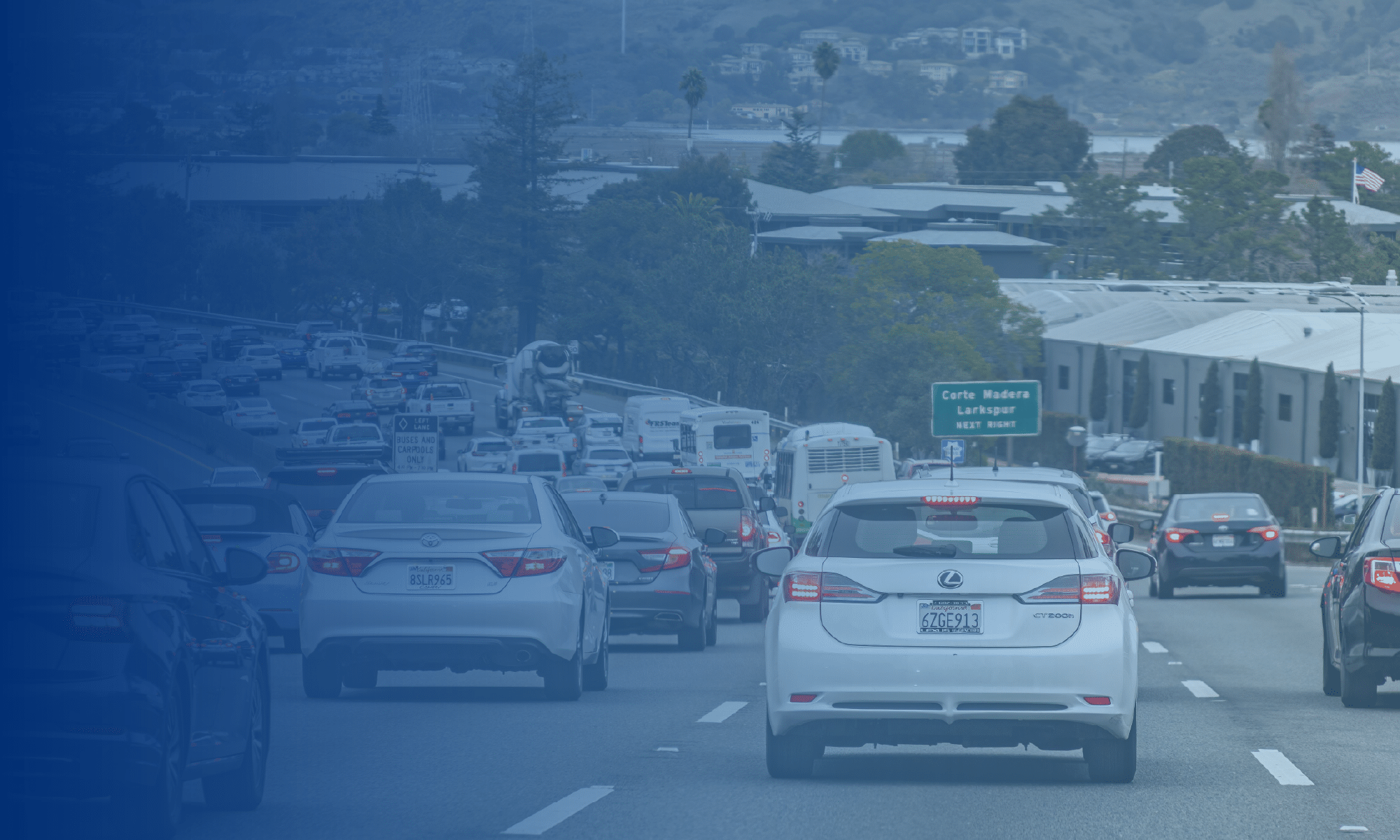
Real-time speed prediction isn’t just a feature. It is the backbone of tomorrow’s intelligent mobility systems.
INRIX has launched a new global machine learning model that delivers unmatched accuracy, scalability, and resilience for traffic prediction: a critical step in our broader AI strategy. To learn more Ashley Babani, Marketing Manager at INRIX, sat down with Shashank Saraogi, VP of Engineering at INRIX, to discuss what this innovation means for drivers, agencies, and the future of mobility.
Ashley: Why is real-time speed prediction important?
Shashank: Real-time speed prediction is the foundation of modern traffic management. Think of it in two contexts:
- Drivers: If you are on a highway and an accident occurs, you need to know immediately whether to take a detour. A five-minute delay in that information can mean the difference between a smooth reroute and being stuck in gridlock.
- Agencies & First Responders: For a traffic engineer or emergency operator, real-time prediction determines how quickly they can dispatch additional 911 units, set up diversions, or trigger digital signage. The decisions save lives, reduce congestion, and restore mobility faster.
Without accurate prediction, those decisions are slower and less effective. With it, they are smarter, safer, and more efficient.
Ashley: Why is real-time speed prediction such a hard problem?
Shashank: It’s the scale and complexity. INRIX processes trillions of GPS points every day across the global road network. These data streams must be ingested, cleaned, and processed in milliseconds, so predictions are available when they matter most.
The challenge is not just making accurate predictions but delivering that precision instantly, everywhere, across highways with dense traffic and rural roads with sparse data.
Ashley: Why does this require machine learning?
Shashank: Traffic patterns are highly non-linear and vary dramatically by road type. Highways are data-rich: hundreds of probe vehicles provide continuous feedback. However, neighborhood roads or rural routes can go hours without a single probe.
A static rules engine cannot handle these extremes. Machine learning allows INRIX to:
- Generalize across sparse data by learning patterns from similar roads.
- Adapt to anomalies like weather events, sports games, or accidents.
- Continuously improve as more data streams in.
INRIX uses models that blend short-term time-series forecasting (e.g., what happens in the next 5 minutes) with spatio-temporal deep learning that understands correlations across adjacent road segments.
Ashley: Let’s talk about the recent launch. What exactly did you do, and why?
Shashank: We have built and launched a global deep learning ML model for real-time speed prediction; engineered for higher accuracy, faster performance, and worldwide scalability. The system is designed with four layers of innovation:
- Data Ingestion: Probe vehicle data, incidents, and contextual signals stream at global scale.
- Processing: Data is normalized and enriched with distributed preprocessing.
- Model Inference: A deep learning engine runs in real-time across GPU-backed nodes for millisecond-level prediction.
- Serving Layer: Predictions are streamed back through low-latency APIs to power customer applications, navigation platforms, OEM systems, and transportation agency dashboards worldwide.
This shift allowed INRIX to retire millions of lines of bespoke code, unify our system, and scale globally without fragile regional exceptions.
Ashley: What benefits are you seeing from this shift?
Shashank: The transformation has unlocked several tangible benefits:
- Higher Model Accuracy: By combining dense highway data with sparse local-road signals, we have reduced prediction error rates across the board.
- Faster Predictions: A next-generation inference engine delivers results in milliseconds.
- Rapid Innovation: We can test, validate, and evolve models continuously; shortening the cycle from idea to global deployment.
- Scalable Experimentation: We can perform A/B experiments for new features or model variants across millions of trips and quickly promoted if they outperform.
- Developer Velocity: Teams can retrain on petabytes of historical data and roll out updates worldwide in days, not months.
- Resilience: A unified architecture simplifies monitoring, observability, and failover at global scale.
Most importantly, this launch is a key pillar of the INRIX AI strategy. It gives us a foundation for future innovation, from predicting multimodal traffic flows to integrating with connected vehicle systems. Real-time speed prediction isn’t just a feature; it’s a strategic ingredient for our long-term success.
Ashley: Where does this fit into how INRIX views AI and innovation?
Shashank: This launch marks just the beginning. At INRIX, we see real-time speed prediction as a foundational building block in a larger AI-driven mobility ecosystem. This vision extends to city-scale predictive models that anticipate congestion and multimodal flows, agentic architectures that detect and respond to anomalies, and tools that support the future of electric and autonomous mobility. Together, these capabilities lay the groundwork for safer, smarter, and more efficient transportation. By enabling vehicles and cities to optimize not just for time, but also for energy efficiency, safety, and resilience, real-time speed prediction becomes a strategic cornerstone positioning INRIX to lead the next decade of predictive, intelligent mobility solutions.




